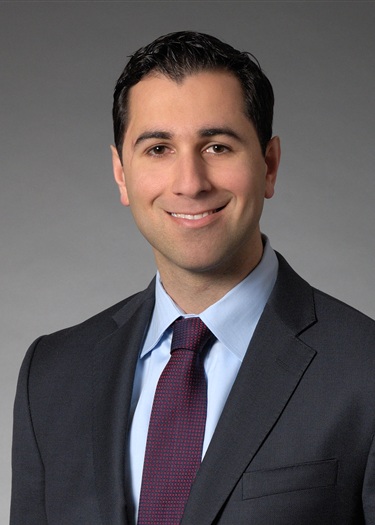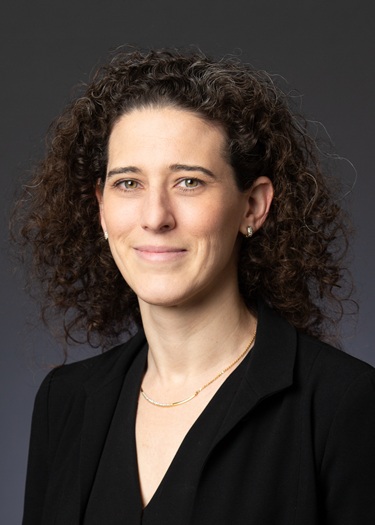Investment Funds and Securities Enforcement and Regulatory
CFTC Proposes Amendments to Mandatory Clearing Requirements for Interest Rate Swaps

On May 9, 2022, the U.S. Commodity Futures Trading Commission (CFTC or Commission) proposed amendments to the CFTC’s mandatory clearing requirements for interest rate swaps (the Proposal).1 The Proposal represents another phase in the ongoing global effort to transition away from interbank offered rates (IBORs), such as the London Interbank Offered Rate (LIBOR), and toward alternative risk-free reference rates (RFRs). Under the Proposal, swaps referencing certain overnight RFRs, including the Secured Overnight Funding Rate (SOFR), would become subject to mandatory clearing, and swaps referencing LIBOR would no longer be subject to mandatory clearing.
The Proposal has long been awaited and we expect that the CFTC will act quickly to adopt it in substantially the form in which it has been proposed, following a 30-day comment period ending June 30, 2022.
KEY TAKEAWAYS
- The CFTC is proposing to amend its interest rate swap clearing rules to remove all LIBOR and Euro Overnight Index Average (EONIA) swap clearing requirements (in two phases) and to add requirements to clear overnight index swaps (OIS) referencing the following RFRs —SOFR, Euro Short-Term Rate (€STR), Swiss Average Rate Overnight (SARON), Tokyo Overnight Average (TONA), and Singapore Overnight Rate Average (SORA).
- The Proposal does not cover RFR-linked basis swaps, although those swaps are currently being cleared on a voluntary basis.
- The expected timeline for compliance with a final rule, with respect to trading in SOFR and other RFR-based OIS, will be 30 days after the date of publication of a final rule in the Federal Register. Elimination of the clearing mandate for USD LIBOR-based swaps would begin on July 1, 2023.
- Market participants that plan to trade SOFR and other RFR-based OIS will need to be in a position to clear those swaps as soon as they become subject to mandatory clearing. Market participants relying on clearing exceptions or exemptions will want to ensure continued compliance with the conditions for reliance on those exceptions or exemptions and consider whether any updates to related policies and procedures are required.
- Comments on the Proposal are due June 30, 2022, and it is expected that the CFTC will act quickly thereafter to adopt it in substantially the form in which it has been proposed.
BACKGROUND
The Commodity Exchange Act (CEA), as amended by the Dodd-Frank Wall Street Reform and Consumer Protection Act (Dodd-Frank Act), requires certain classes of swaps to be cleared through a derivatives clearing organization (DCO),2 if the CFTC has made a determination that such swaps are required to be cleared.3 The CFTC released its first clearing determination in December 20124 and a second in October 2016.5 The categories of interest rate swaps required to be cleared currently include (i) fixed-to-floating swaps, (ii) basis swaps, (iii) forward rate agreements (FRAs), and (iv) OIS, and cover a range of currencies and IBOR floating rate indexes.6
LIBOR and other IBORs are interest rate benchmarks that are widely used for many financial instruments, including swaps. As LIBOR and other IBORs are being phased out, regulators across many major jurisdictions have developed RFRs intended to serve as alternatives to LIBOR and the various other IBORs. In the United States, the Alternative Reference Rates Committee (ARRC), tasked by the Federal Reserve Board and the Federal Reserve Bank of New York, selected SOFR as the recommended alternative to USD LIBOR.7 Other RFRs identified as alternatives for IBORs in currencies other than USD include (i) the Sterling Overnight Index Average (SONIA) for GBP, (ii) SARON for CHF, (iii) TONA for JPY, and (iv) €STR for EUR.
In light of ongoing efforts by the international regulatory community, market participants, and others to transition financial markets from IBORs to RFRs, on November 23, 2021, the Commission published a Request for Information (RFI) seeking public input regarding how it should amend the interest rate swap clearing requirement to address the cessation of IBORs as benchmark reference rates and the market adoption of swaps that reference RFRs.8 The Proposal reflects input received in response to the RFI as well as input resulting from ongoing consultation and coordination among regulatory authorities and with market participants.
PROPOSED CHANGES TO THE CFTC INTEREST RATE SWAP CLEARING REQUIREMENT
The Proposal would amend CFTC Regulation 50.4(a) to (i) remove all LIBOR and EUR EONIA swap clearing requirements (in two phases) and (ii) add requirements to clear corresponding RFR swaps. The LIBOR swaps for which clearing requirements would be removed span all four classes of swaps currently required to be cleared: fixed-to-floating swaps, basis swaps, FRAs, and OIS; however, the RFR swaps that the Commission proposes to add to the clearing requirement are all OIS.9 In the Proposal, the Commission notes that although RFR-linked basis swaps are currently cleared on a voluntary basis, the Commission is not at this time proposing to add any new requirements to clear RFR-linked basis swaps because they are being used primarily to move out of LIBOR swap positions and into RFR swap positions.10 The Proposal notes that this is intended to provide market participants with flexibility, and that Commission staff will continue to monitor the use of RFR-linked basis swaps as the IBOR transition progresses.11
The expected timeline for compliance with a final rule, with respect to trading in SOFR and other RFR-based OIS, will be 30 days after the date of publication of a final rule in the Federal Register. In addition, the CFTC is proposing to eliminate the clearing mandate for USD LIBOR-based swaps beginning July 1, 2023. It is anticipated that USD LIBOR across all tenors will have officially been discontinued by that date.
The following table summarizes the proposed amendments to CFTC Regulation 50.4(a) under the Proposal:12
|
Proposed Change |
Proposed Effective Date |
|
Require clearing for the following RFR OIS:
|
30 days after publication of a final rule in the Federal Register. |
|
Remove GBP-, CHF-, and JPY-denominated LIBOR swaps from the fixed-to-floating swap, basis swap, and FRA classes. |
30 days after publication of a final rule in the Federal Register. |
|
Remove EUR-denominated EONIA OIS. |
30 days after publication of a final rule in the Federal Register. |
|
Change the maximum stated termination date range for GBP-denominated SONIA OIS to 50 years (from three years), for a new stated termination date range of seven days to 50 years. |
30 days after publication of a final rule in the Federal Register. |
|
Remove USD-denominated LIBOR swaps from the fixed-to-floating swap, basis swap, and FRA classes. |
July 1, 2023 |
|
Remove SGD-denominated SOR-VWAP swaps from the fixed-to-floating swap class. |
July 1, 2023 |
PREPARING FOR FINAL RULES
Many firms have already begun to transition from LIBOR-based interest rate swaps to RFR-based interest rate swaps, and other firms will soon begin this transition. However, all firms will need to ensure that if they plan to trade SOFR and other RFR-based OIS, they will be in a position to clear those swaps as soon as they become subject to mandatory clearing. This may require putting in place new clearing relationship documentation and taking further steps to be prepared from an operational perspective.
Notwithstanding that this is merely a “proposal,” firms should familiarize themselves with the new proposed scope of mandatory clearing and determine whether and to what extent new documentation and/or new clearing relationships will be required. While the Proposal does not propose changes to the exceptions to, or exemptions from, mandatory clearing, firms relying on such exceptions or exemptions should carefully review their current situations to determine whether any amendments to swap policies and procedures may be required. Further, firms that rely on clearing exceptions or exemptions that have other conditions should ensure that those conditions will continue to be fulfilled once clearing transitions from LIBOR-based to non-LIBOR-based interest rate swaps.
1 Clearing Requirement Determination Under Section 2(h) of the Commodity Exchange Act for Interest Rate Swaps to Account for the Transition from LIBOR and Other IBORS to Alternative Reference Rates, 87 Fed. Reg. 32898 (May 31, 2022), https://www.govinfo.gov/content/pkg/FR-2022-05-31/pdf/2022-10490.pdf.
2 “Clearing” is the process by which a DCO is substituted as the counterparty to both sides of a transaction, becoming the “buyer to every seller” and the “seller to every buyer.” Mandatory clearing of standardized swaps was one of the central features of the reforms of the over-the-counter derivatives markets under the Dodd-Frank Act, which was enacted over a decade ago.
3 CEA Section 2(h)(1)(A), 7 U.S.C. 2(h)(1)(A).
4 Clearing Requirement Determination Under Section 2(h) of the CEA, 77 Fed. Reg. 74284 (Dec. 13, 2012), https://www.cftc.gov/sites/default/files/idc/groups/public/@lrfederalregister/documents/file/2012-29211a.pdf.
5 Clearing Requirement Determination Under Section 2(h) of the Commodity Exchange Act for Interest Rate Swaps, 81 Fed. Reg. 71202 (Oct. 14, 2016), https://www.cftc.gov/sites/default/files/idc/groups/public/@lrfederalregister/documents/file/2016-23983a.pdf.
6 A complete list of the categories of swaps currently required to be cleared under the CEA is available at https://www.cftc.gov/sites/default/files/idc/groups/public/@otherif/documents/ifdocs/clearingrequirementcharts9-16.pdf.
7 Alternative Reference Rate Committee, “The ARRC Selects a Broad Repo Rate as its Preferred Alternative Reference Rate,” June 22, 2017, https://newyorkfed.org/medialibrary/microsites/arrc/files/2017/ARRC-press-release-Jun-22-2017.pdf.
8 Swap Clearing Requirement To Account for the Transition from LIBOR and Other IBORs to Alternative Reference Rates, 86 Fed. Reg. 66476 ((Nov. 23, 2021), https://www.govinfo.gov/content/pkg/FR-2021-11-23/pdf/2021-25450.pdf.
9 OIS are swaps where one leg is calculated based on a fixed rate and the other is calculated based on a daily overnight floating rate (i.e., the RFR).
10 Proposal at 32904.
11 Id.
12 Id. at 32904-05.
Attorney Advertising—Sidley Austin LLP is a global law firm. Our addresses and contact information can be found at www.sidley.com/en/locations/offices.
Sidley provides this information as a service to clients and other friends for educational purposes only. It should not be construed or relied on as legal advice or to create a lawyer-client relationship. Readers should not act upon this information without seeking advice from professional advisers. Sidley and Sidley Austin refer to Sidley Austin LLP and affiliated partnerships as explained at www.sidley.com/disclaimer.
© Sidley Austin LLP
Contacts
Offices
Capabilities
Suggested News & Insights
- Stay Up To DateSubscribe to Sidley Publications
- Follow Sidley on Social MediaSocial Media Directory





